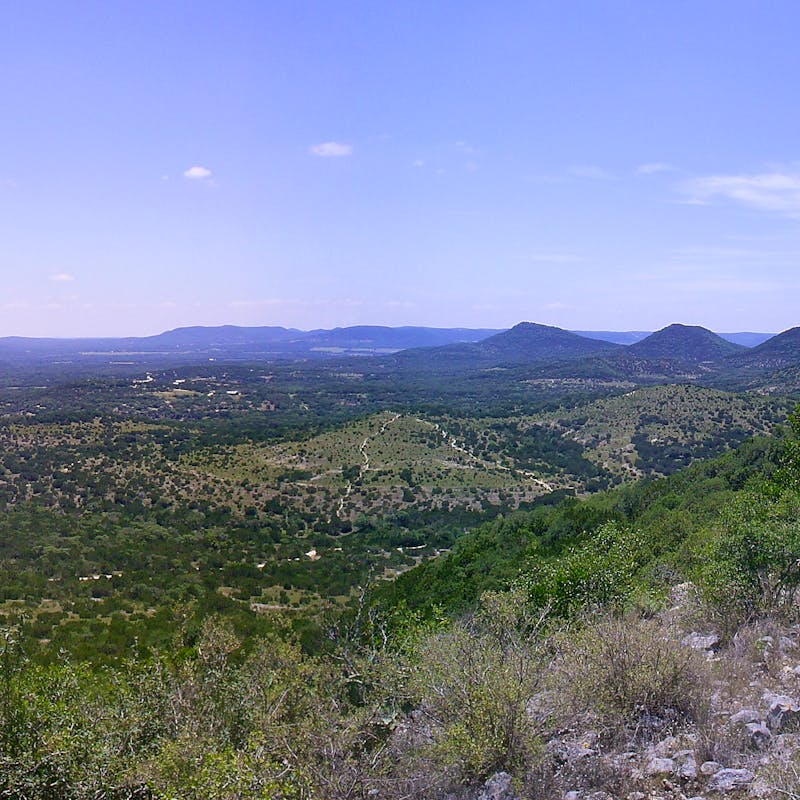I’m one of a few staff representing Defenders of Wildlife at the Convention for Biological Diversity meeting in Montreal this week, discussing how the U.S. can confront the biodiversity crisis and its leading drivers—climate change, invasive species, pollution, overexploitation, and changes in land and sea use. In this blog, I’ll be talking about the final driver of biodiversity loss: Changes in land and sea use. Our case study species is a small, beautiful bird, and the only bird to exclusively breed in Texas—the golden-cheeked warbler.
Don’t Mess with Our Texas Birds
Nestled in central Texas, during the Spring and early Summer, one might be fortunate enough to hear the lively trill of the golden-cheeked warbler. The sound of four short staccato notes followed by a crescendo to a sweet high note, is one of the distinct sounds of this small, bright Texas native. However, the songs of the yellow-headed bird are slowly fading as the warblers’ already limited breeding habitat is being lost. Their woodland habitats have been cleared to make room for agriculture or cut down during road and housing construction and urban development.
Golden-cheeked warblers are neotropical migratory songbirds, that were listed as endangered under the U.S. Endangered Species Act (ESA) in 1990. These warblers breed exclusively in the mixed Ashe juniper and oak woodlands of the Texas Hill Country. They breed nowhere else in the world. Ashe juniper is essential to warblers' survival as females strip bark from the trees to create their nests. In addition, the tree develops nutrient-rich soil, provides shade and has many other ecological benefits for other wildlife and the surrounding environment. But in one of the fastest-developing areas of the country, this drought-tolerant evergreen tree is often seen as an obstacle to agricultural or urban development.
Most of the warbler's breeding range is comprised of privately owned property, which leaves the songbirds and their offspring vulnerable to a patchwork of land management practices and changes in land use over time. Defenders of Wildlife’s Center for Conservation Innovation (CCI) conducted research to better understand changes to warbler habitat quality and identify areas that should be prioritized for future conservation efforts. Using land-cover and disturbance data spanning from 1985 to 2018, CCI quantified changes in breeding-habitat quantity and suitability. It found that 42% of the warblers’ suitable habitat has been lost over that three-decade period.
Since 1985, 13% of all forests within the warbler’s breeding range have been disturbed, with greater incidences near the metropolitan areas of San Antonio (32%) and Austin (24%). Declines of suitable habitat were smaller in protected areas, but protected areas, which only make up less than 2% of the state, only represent 10% of suitable habitat in the breeding range.
The drastic declines in suitable habitat suggest that overall estimates of forest loss may underestimate true habitat loss as continued degradation and fragmentation may have an impact on the ecological viability of remaining forests for the warblers. The few protected areas within the Texas range continue to play a significant role in warbler breeding. The study concludes that strengthening efforts for current protected areas and expanding protections in the Balcones Canyonlands and Fort Hood areas as well as regions west of San Antonio and Fort Worth will aid the species’ recovery.
If you want to learn more about the golden-cheeked warbler in the wild, you can watch Azalia Rodriguez, Defenders’ Texas representative, visit Balcones Canyonlands Preserve in Austin, Texas, where she observed and monitored the songbirds.
The golden-cheeked warbler is just one of the many species that could benefit from a well-coordinated national effort to save our species. Land cover conversion will continue and, now more than ever, people need to evaluate how to balance their needs with those of their wildlife neighbors. Wildlife issues are issues that affect us all in one way or another and if people gained this understanding, we could more adequately address these drivers of biodiversity and create a national biodiversity strategy that is long overdue.
Establishing a National Biodiversity Strategy
The U.S. lacks a comprehensive and coordinated approach to tackling the five main drivers of the biodiversity crisis. Worldwide, 194 other countries have developed forms of a national biodiversity strategy. A national biodiversity strategy would address the extinction crisis by requiring more effective and coordinated use of laws and policies to protect biodiversity and reverse its decline, while reasserting the U.S.’ international leadership.
It’s time for America to lead—to demonstrate how we can live in harmony with nature and to respect our environment. We cannot think of a more important roadmap toward a sustainable future than a comprehensive national biodiversity strategy. It will help us prioritize and safeguard the natural resources that are critical to humanity’s survival.
The time to invest in our planet is now, before it’s too late.









